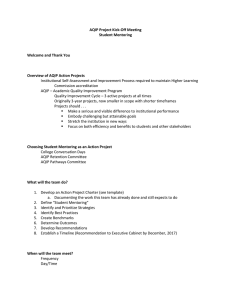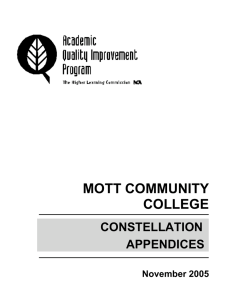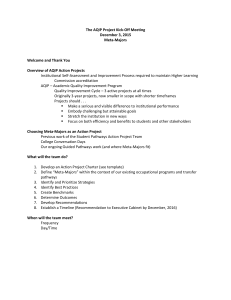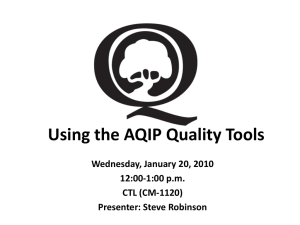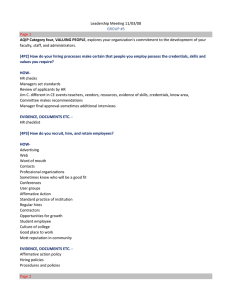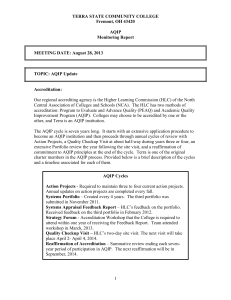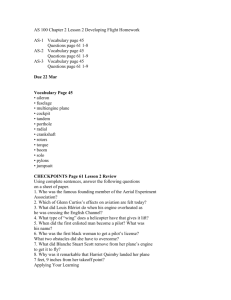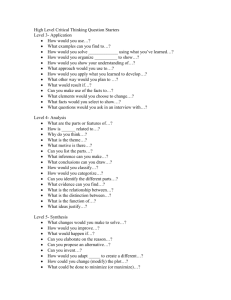1P4: How do you design responsive academic programming that
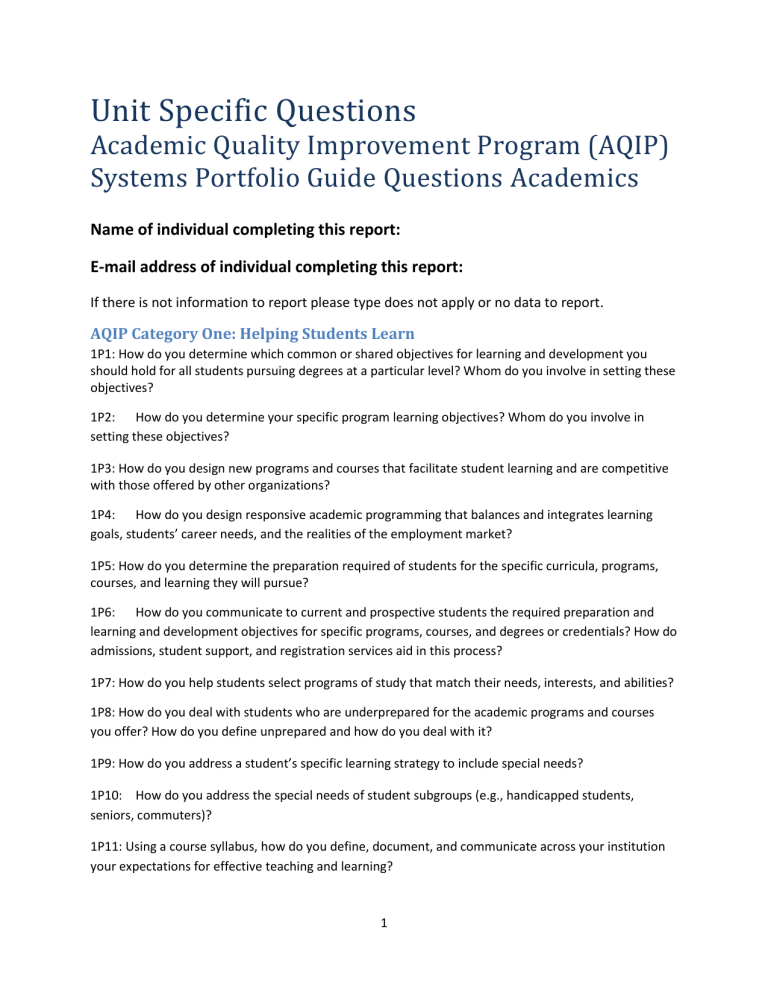
Unit Specific Questions
Academic Quality Improvement Program (AQIP)
Systems Portfolio Guide Questions Academics
Name of individual completing this report:
E-mail address of individual completing this report:
If there is not information to report please type does not apply or no data to report.
AQIP Category One: Helping Students Learn
1P1: How do you determine which common or shared objectives for learning and development you should hold for all students pursuing degrees at a particular level? Whom do you involve in setting these objectives?
1P2: How do you determine your specific program learning objectives? Whom do you involve in setting these objectives?
1P3: How do you design new programs and courses that facilitate student learning and are competitive with those offered by other organizations?
1P4: How do you design responsive academic programming that balances and integrates learning goals, students’ career needs, and the realities of the employment market?
1P5: How do you determine the preparation required of students for the specific curricula, programs, courses, and learning they will pursue?
1P6: How do you communicate to current and prospective students the required preparation and learning and development objectives for specific programs, courses, and degrees or credentials? How do admissions, student support, and registration services aid in this process?
1P7: How do you help students select programs of study that match their needs, interests, and abilities?
1P8: How do you deal with students who are underprepared for the academic programs and courses you offer? How do you define unprepared and how do you deal with it?
1P9: How do you address a student’s specific learning strategy to include special needs?
1P10: How do you address the special needs of student subgroups (e.g., handicapped students, seniors, commuters)?
1P11: Using a course syllabus, how do you define, document, and communicate across your institution your expectations for effective teaching and learning?
1
1P12: How do you build an effective and efficient course delivery system that addresses both student’ needs and your institution’s requirements?
1P13: How do you ensure that your programs and courses are up-to-date and effective?
1P14: Did you, or do you plan to, change or discontinue programs and courses?
1P15: How do you determine and address the learning support needs (tutoring, advising, placement, library, laboratories, etc.) of your students and faculty in your student learning, development, and assessment processes?
1P16: How do you align your co-curricular development goals with your curricular learning objectives?
1P18: How do you determine that students to whom you award degrees and certificates have met your learning objectives and development expectations?
1P19: How do you design your processes for assessing student learning?
1R1: What measures of your students’ leaning and development do you collect and analyze regularly? [1P13]
1R2: What are your performance results for your common student learning and development objectives?
1R3: What are your performance results for specific program learning objectives?
1R4: What is your evidence that the students completing your programs, degrees, and certificates have acquired the knowledge and skills required by your stakeholders (i.e., other educational institutions and employers)? [1P12, 1R2]
AQIP Category Two: Accomplishing Other Distinctive Objectives
2P2: Do you work with external stakeholders?
2I2: How do your culture and infrastructure help you to select specific processes to improve and to set targets for improved performance results in Accomplishing Other Distinctive Objectives?
AQIP Category Three: Understanding Students’ and Other Stakeholders’ Needs
3R1: How do you determine the satisfaction of your students and other stakeholders? What measures of student and other stakeholder satisfaction do you collect and analyze regularly?
3R2: What tools do you use to determine student satisfaction?
AQIP Category Four: Valuing People
4P1: How do you identify the specific credentials, skills, and values required for faculty, staff, and administrators?
2
4P2: How do your hiring processes make certain that the people you employ possess the credentials, skills, and values you require?
4P3: How do you recruit, hire, and retain employees?
4P7: How do you ensure the ethical practices of all of your employees?
4P8: How do you determine training needs? How do you align employee training with short- and long-range organizational plans, and how does it strengthen your instructional and non-instructional programs and services?
4P9: How do you train and develop all faculty, staff, and administrators to contribute fully and effectively throughout their careers with your institution? How do you reinforce this training?
4R3: What evidence indicates the productivity and effectiveness of your faculty, staff, and administrators in helping you achieve your goals?
AQIP Category Six: Supporting Institutional Operations
6P3: How do you design, maintain, and communicate the key support processes that contribute to everyone’s physical safety and security?
AQIP Category Seven: Measuring Effectiveness
7P4: Do you have unmet data support needs? Is there data that you need that you do not believe you have access to in order accomplish.
AQIP Category Nine: Building Collaborative Relationships
9P1: Do you create, prioritize, and build relationships with the educational institutions and other organizations from which you receive your students?
9P2: How do you create, prioritize, and build relationships with the educational institutions and employers that depend on the supply of your students and graduates that meet those organizations’ requirements?
9P3: How do you create, prioritize, and build relationships with the organizations that provide services to your students?
9P4: How do you create, prioritize, and build relationships with the organizations that supply materials and services to your institution?
9P5: How do you create, prioritize, and build relationships with the education associations, external agencies, consortia partners, and the general community with whom you interact?
9P6: How do you ensure that your partnership relationships are meeting the varying needs of those involved?
9P7: How do you create and build relationships between and among departments and units within your institution? How do you assure integration and communication across these relationships?
3
9R1: What measures of building collaborative relationships, external and internal, do you collect and analyze regularly?
9R2: What are your performance results in building your key collaborative relationships, external and internal?
9R3: How do your results for the performance of your processes for Building Collaborative
Relationships compare with the performance results of other higher education institutions and, if appropriate, of organizations outside of higher education?
9I1: What recent improvements have you made in this category? How systematic and comprehensive are your processes and performance results for Building Collaborative Relationships?
9I2: How do your culture and infrastructure help you to select specific processes to improve and to set targets for improved performance results in Building Collaborative Relationships?
4
